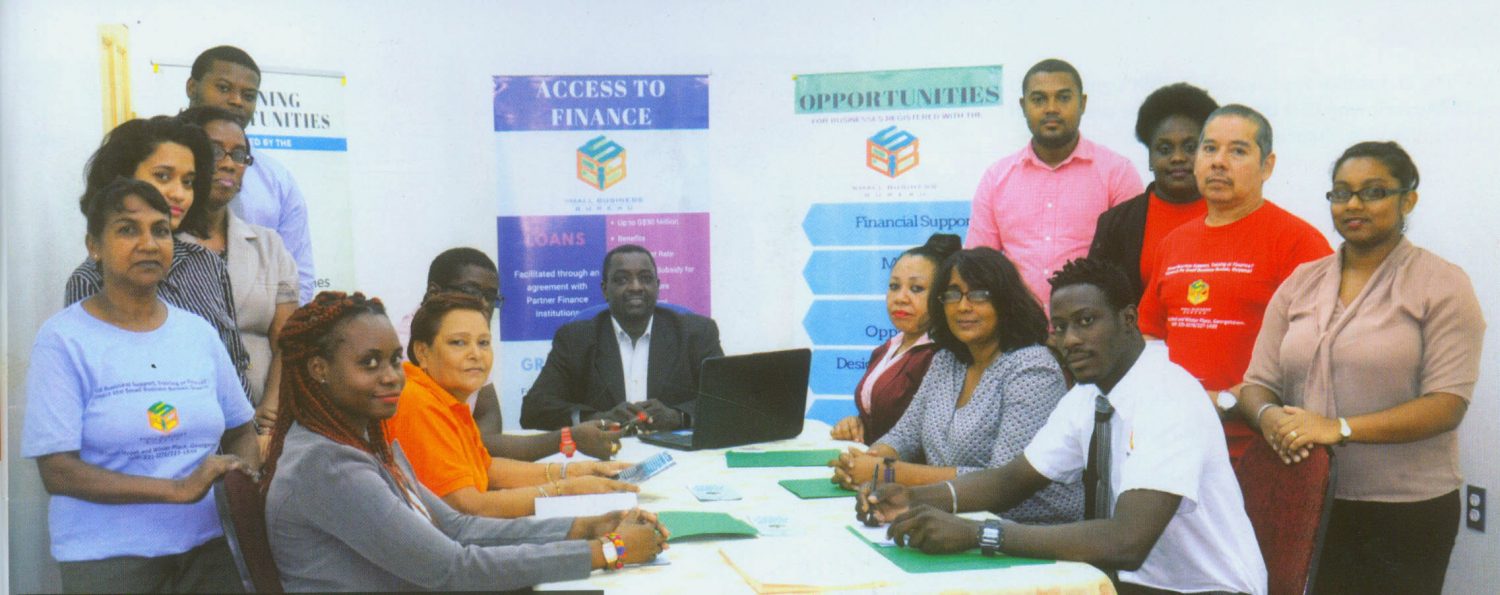The long-awaited reports on the work of the Small Business Bureau (SBB) for the years 2015 and 2016 “should be ready for publishing next week” though an official assessment of the performance of the entity launched in 2013 suggests that it has experienced mixed fortunes over the period of its existence.
While the Bureau had originally set itself a target of creating 2,200 jobs over two years, ending in March 2016, Stabroek Business has been informed that that target had been reduced. “That target had been adjusted downwards though we have never been told what either the new target or the new time frame was,” the Bureau’s Chief Executive Officer Dr. Lowell Porter said in responding to questions put to him by the Stabroek Business.
In a response which appeared, in part, to seek to account for the reduction in the job-creation target Porter told Stabroek Business that the project had been, in the first instance, an extremely ambitious one. “For Guyana it was unrealistic to create that much jobs within a two-year time frame. He said that the grant programme component of the Bureau’s activities had created 426 jobs whilst the loan programme had “preserved” 325 jobs and created a further 255 “potential jobs.” A total of more than 1000 jobs were preserved, created and potentially created which surpassed the reduced target, Porter said.
The Small Business Bureau is a semi-autonomous state agency that was created to fulfill and execute the mandate set out in the Small Business Act No. 2 of 2004 and which is aimed at providing incentive regimes and support programmes for small businesses through four functional areas viz access to financing for small businesses, entrepreneurial/business development services, a credit guarantee scheme and a commitment for 20% of government procurement from small businesses.
Up until now the Bureau’s Credit Guarantee Scheme which is being executed in collaboration with local commercial banks has facilitated a total of 134 loans. 130 of these have so far been disbursed valued at just over US$2.1 million, according to information provided by Porter. The beneficiaries of these have been projects in the low-carbon sectors and have been allocated to 81 male business owners (60%) and 53 female business owners. (40%). Stabroek Business understands that 71% of the loans have been received by beneficiaries in Region Four and that the sectors that have benefitted include fruit and vegetable cultivation, agro processing, apiculture, arts and craft. professional business services, manufacturing, entertainment and music.
“It is important to note that SBB has administered the Credit Guarantee Fund with great success generating over US$40,000 in earned interest, while less than US$7,000 (less than 0.5 %) was claimed against unpaid loans,” Porter said, adding that the value of the Fund is now up to US$1.6M, and that it is expected that it will be used to provide continued support to small businesses.
Meanwhile, Porter has disclosed that to date the Bureau has approved 358 grant applications of which 301 have been disbursed to a total value of US$421,454,000. Information provided to this newspaper indicates that 156 male business owners (44%) and 202 female business owners (56%), all in the micro businesses/low carbon sectors were beneficiaries of the loans and that the grants were distributed in all Regions except Regions Seven and Eight. Region Four received 46% of the grants. A further eleven grants will be disbursed in Region Nine next week.
Part of the responsibility of the Bureau is to evaluate the impact of its interventions on the various small businesses for which it provides support and Stabroek Business understands that as of July this year the agency has implemented a new process to ensure accurate evaluation. In this regard and with effect from October last year grants and loans will be disbursed after six to nine months from the Bureau’s intervention. Porter disclosed that the Bureau is in the process of contracting an independent consultant to evaluate the impact of Bureau-supported projects from January 2014 to October 2016. With effect from October 2016 the new evaluation process implemented in July this year will ensure continuous evaluation of projects. Porter indicated in response to a question put to him by the Stabroek Business that initial scrutiny has confirmed that 65% of the businesses with which the Bureau is involved are “still in operation and doing well.”
And according to Porter while project monitoring in distant areas presents challenges, the new evaluation process will ensure a proper evaluation of all projects that benefit from the Bureau’s financial support. Evaluation will now be performed on a quarterly basis.
Controversy has arisen from time to time over the Bureau’s training regime and Porter told Stabroek Business that since arriving here he had been visiting training sessions. “I was able to identify effectiveness and of course some challenges… the way training is designed and delivered can greatly influence its effectiveness. For 2018, the plan is to focus on articulating the training priorities with our training partners and to ensure that there is clear alignment between the training goals and business objectives,” Porter said, adding that the Bureau was also focused on “identifying and removing or at least minimizing obstacles that might make the training less effective.”
And according to Porter many good things have been done by the Bureau since 2014. “Lessons have been learned, resources have been gradually added, and strategies are being developed and implemented,” he added.





